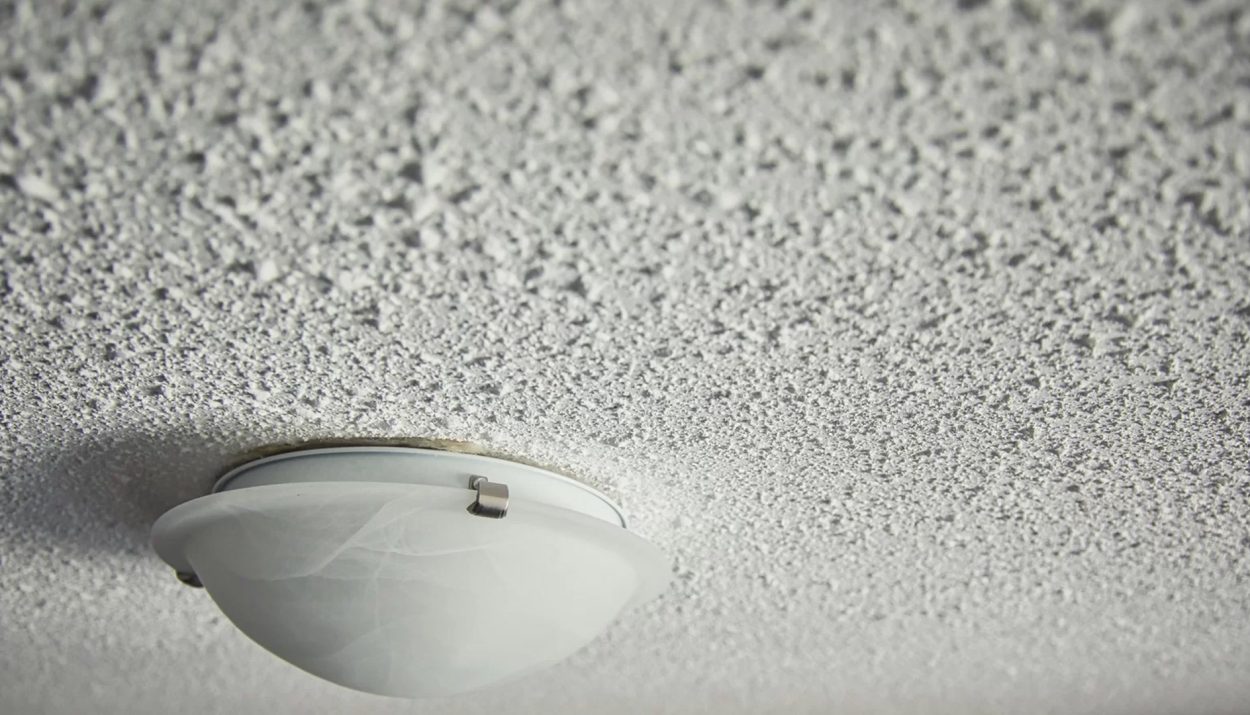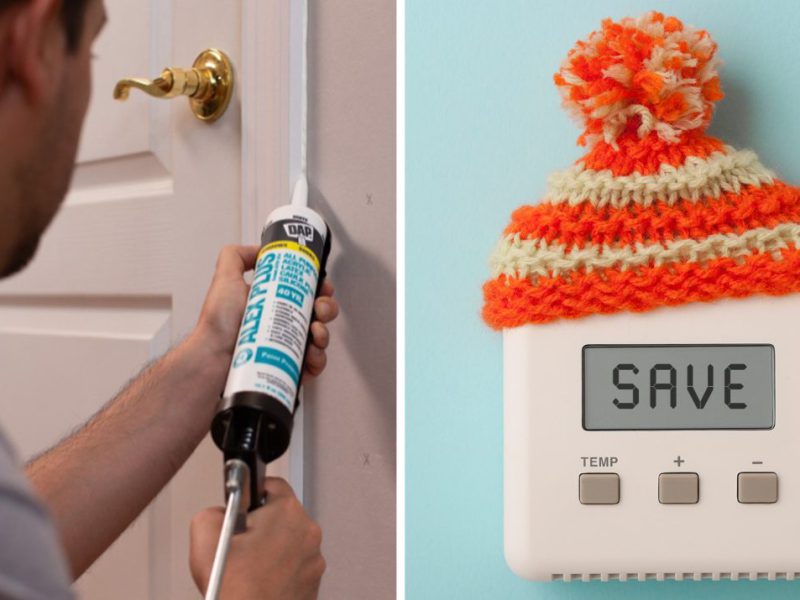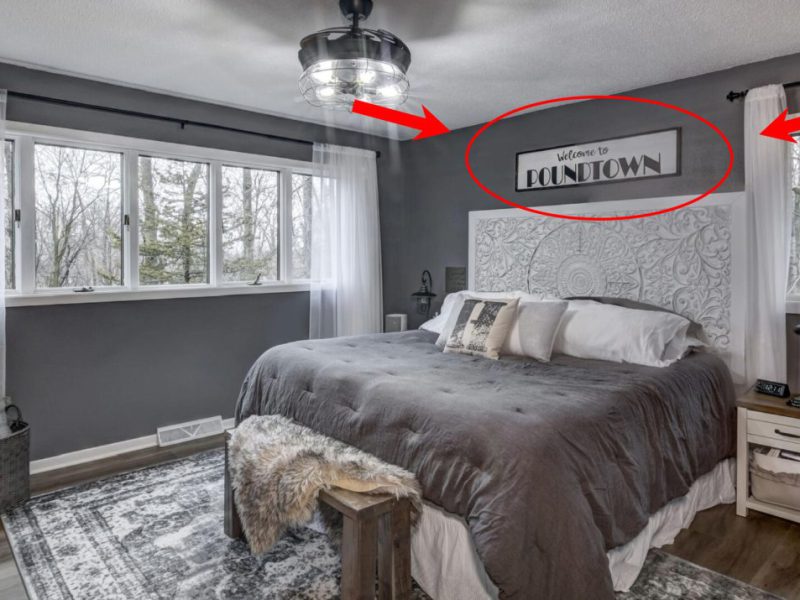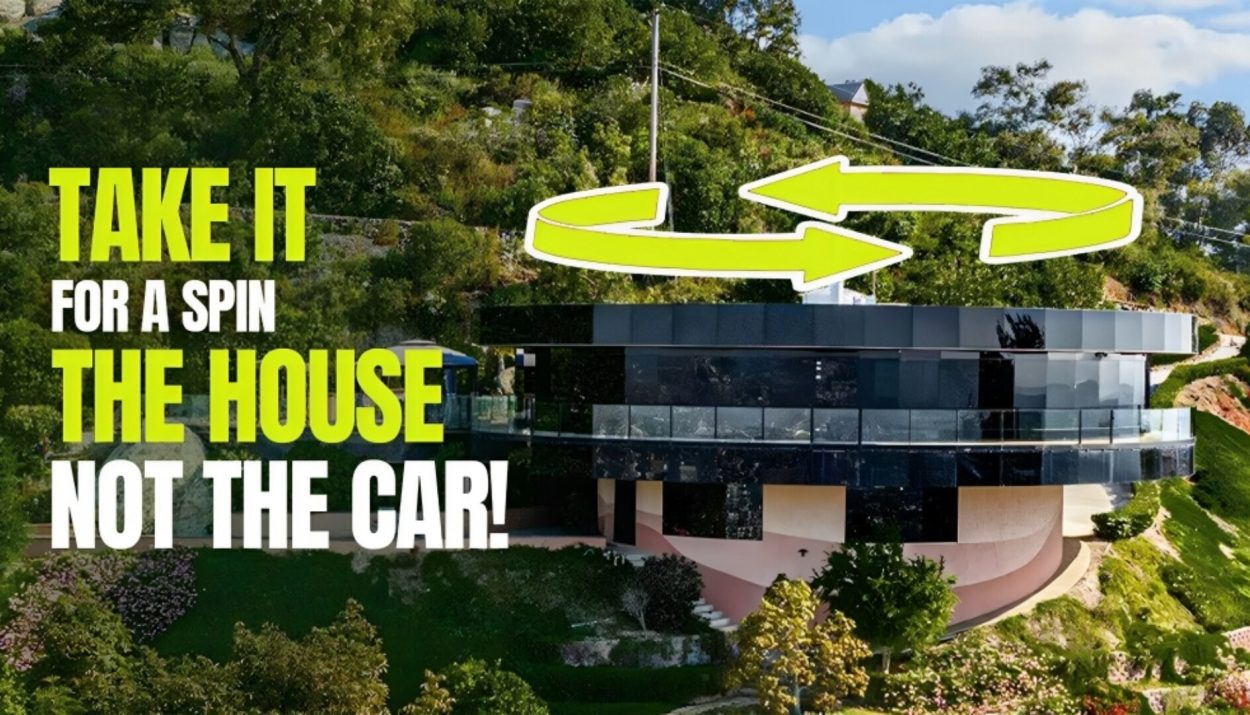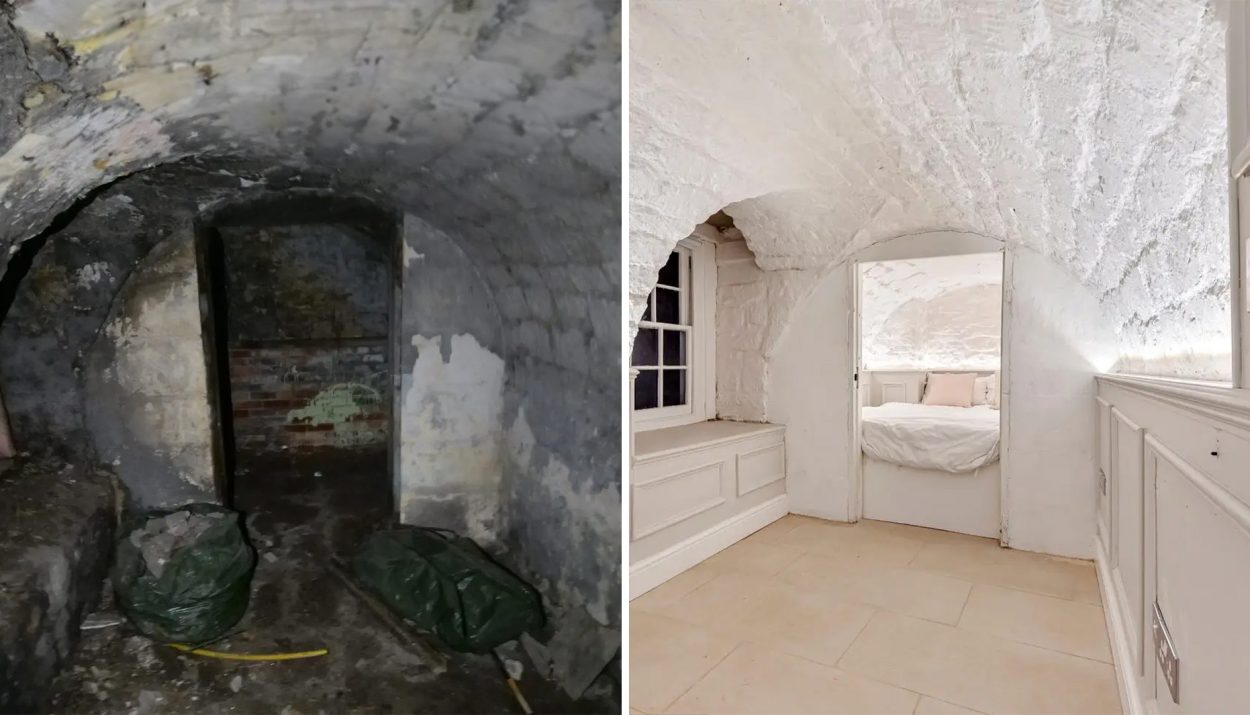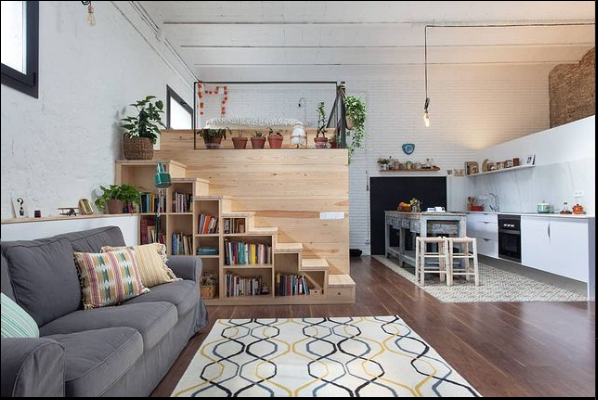Entering a home from the mid-to-late 20th century, your eyes are immediately drawn to the textured ceilings that adorn each room. Among the various styles, the popcorn ceiling stands out with its distinctive bumpy texture, embellishing numerous homes and apartments.
However, with the turn of the new century over two decades ago, came a wave of changes, including shifts in design preferences, relegating these textured ceilings to the realm of nostalgia, much like yesterday’s fashion trends.
It’s highly improbable that there will be a resurgence.
In contrast to homeowners of the past century, today’s residents generally disdain popcorn ceilings, considering them remnants of mid-century design unlikely to see a resurgence. While scraping off these ceilings is an option, it’s a labor-intensive task. Moreover, if not performed with caution, it poses risks to respiratory health.
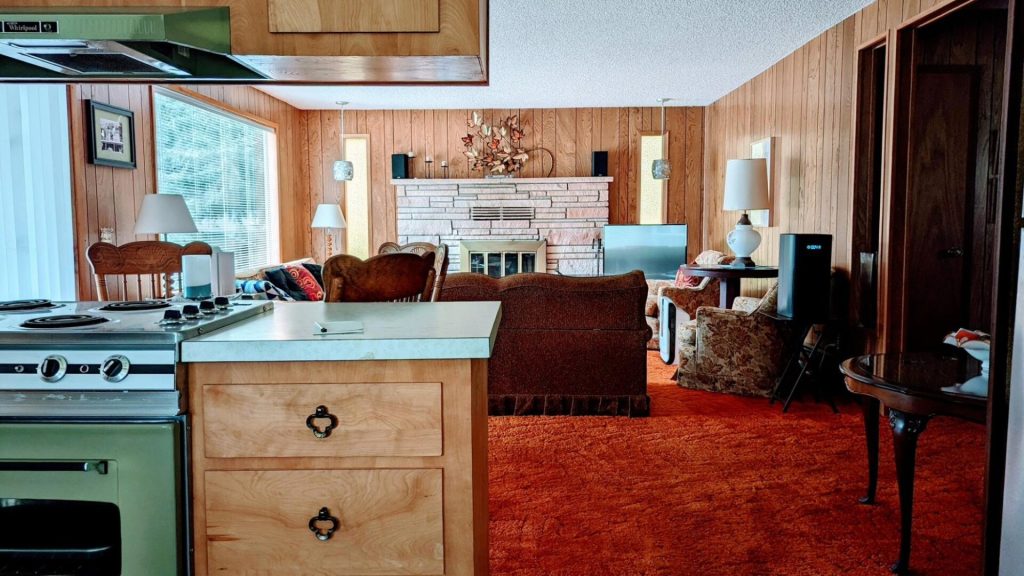
Source: X/alpendamon
If you possess robust arm strength, ample patience, and a fervent determination to rid yourself of the popcorn ceiling, skim-coating presents itself as a viable solution.
What’s the process for skim-coating?
Skim-coating serves as a technique to smooth textured surfaces such as walls or ceilings. It encompasses the application of a thin layer of joint compound or plaster to achieve a flat, uniform finish, perfect for subsequent painting or wallpapering.
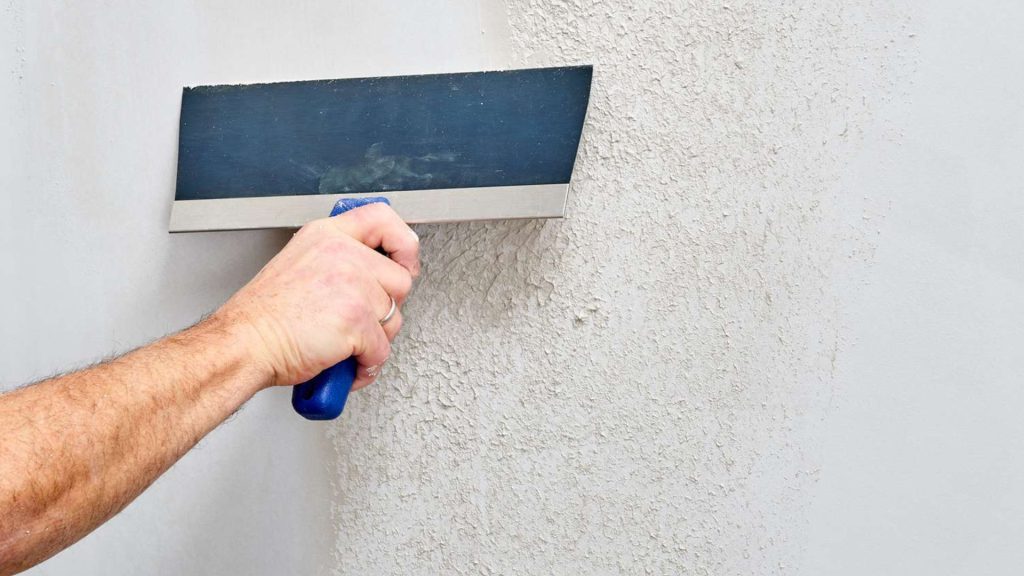
Source: The Spruce/Kevin Norris
Although mastering it requires patience and finesse, skim-coating can effectively address imperfections, lending a space a polished, contemporary aesthetic. While widely embraced as a DIY method for surface enhancement, achieving a flawless outcome demands meticulous attention to detail.
A Vestige From Days Past
Popcorn ceilings have fallen out of favor in recent decades. They’re no longer seen as charming; instead, they’re often considered outdated and even tacky, particularly among younger generations.
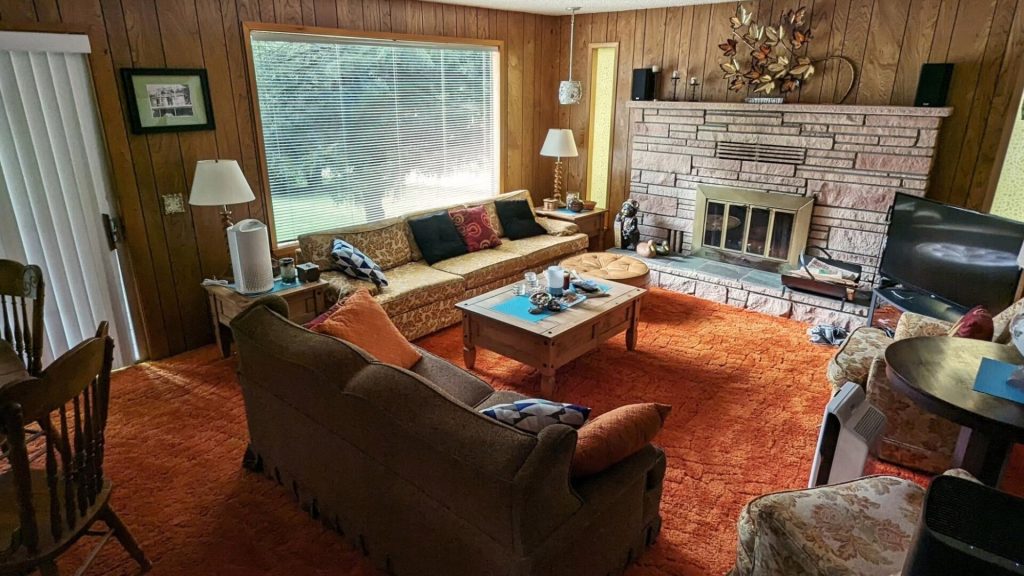
Source: X/alpendamon
In households where they endure, they serve as poignant echoes of 20th-century life. For some, they evoke cherished memories of childhood, while for others, they conjure moments of sentimentality and bliss from days gone by.
Unremarkable Origins: A Quiet History of Popcorn Ceilings
Admittedly, it’s not all doom and gloom with popcorn ceilings; they come with their fair share of pros and cons, like any other design element. Yet, the tale of their rise to popularity is indeed quite unremarkable.
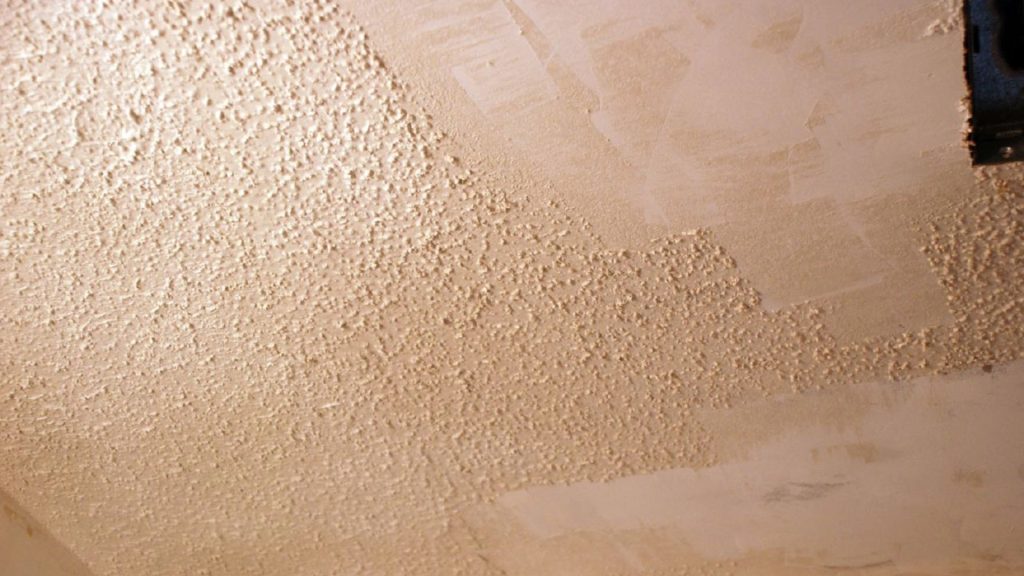
Source: Flickr/rae-star
Popcorn ceilings, alternatively referred to as acoustic or textured ceilings, rose to prominence during the mid-20th century. Surprisingly, their origins can be traced back to the 1930s, when a British firm pioneered their introduction as a pragmatic solution to address noise disturbances within interior spaces. By applying a textured finish, these ceilings effectively dampened sound, offering a cost-effective method to create more acoustically controlled environments. Additionally, the texture served a dual purpose, ingeniously concealing any unsightly stains or marks that might mar the ceiling’s surface. Thus, the adoption of popcorn ceilings swiftly gained traction, as homeowners and builders alike recognized their functional benefits alongside their aesthetic appeal.
Affordable and Effortless: The Ease of Installing Popcorn Ceilings
During the 1950s, popcorn ceilings soared to the height of their popularity, buoyed by their affordability and ease of installation. At the time, the cost to install them was notably low, and their straightforward installation process further cemented their widespread appeal.
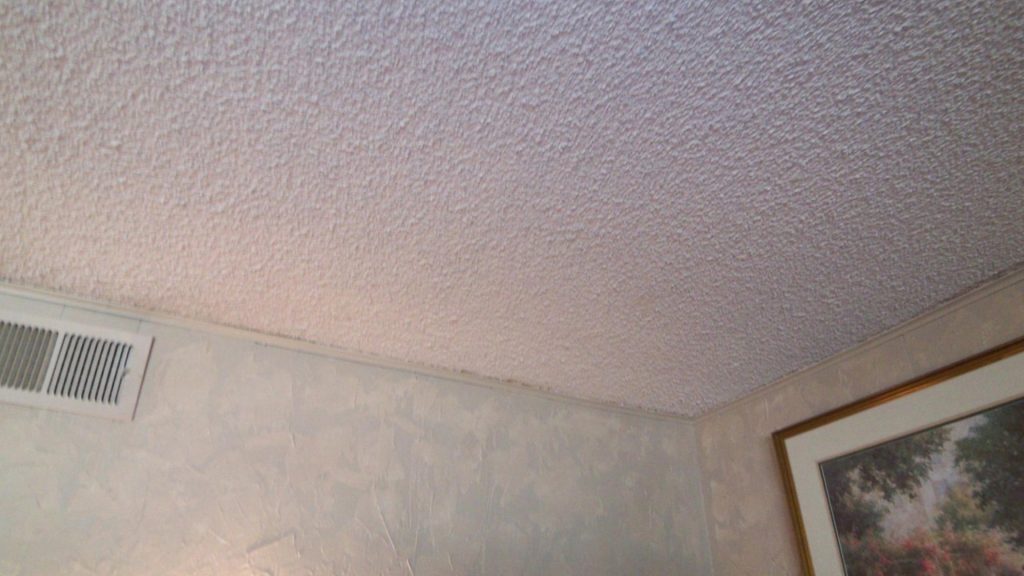
In the construction process, builders applied the coating onto a pre-existing smooth ceiling, typically already finished. This method yielded a textured surface once the coating fully dried, creating the characteristic bumpy texture of popcorn ceilings.
Lasting Allure: The Enduring Charm of Popcorn Ceilings
Popcorn ceilings maintained their popularity over the following decades for the very same reasons that propelled their initial rise: ease of installation and affordability.
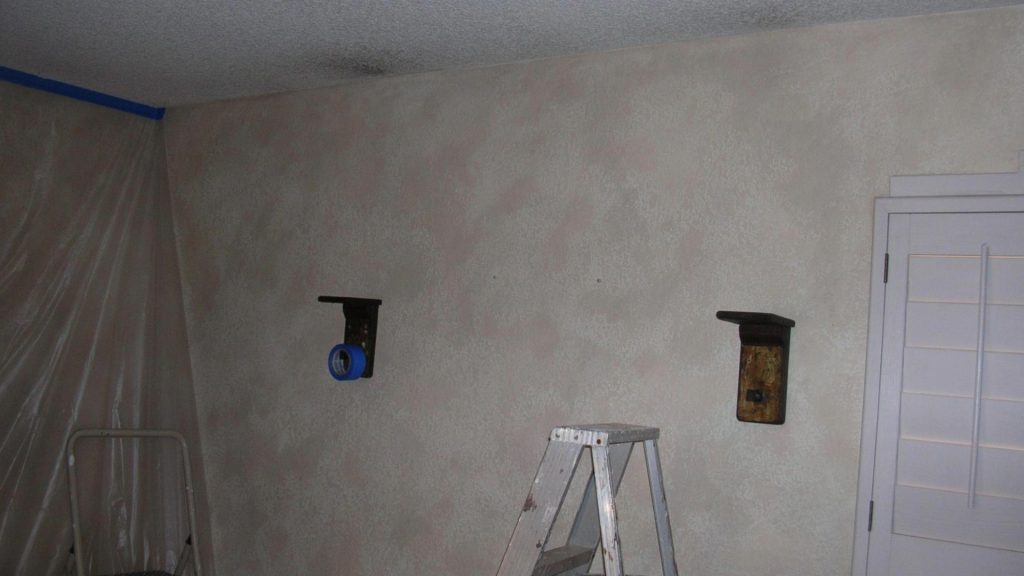
Source: Flickr/Brian Kirk
Builders found popcorn ceilings appealing because they effectively concealed imperfections such as cracks, dents, and errors in craftsmanship. Additionally, there was a prevalent belief that they enhanced room acoustics, making them particularly valued in multi-level homes and apartment complexes.
Public perception
While popcorn ceilings once enjoyed popularity, are they still regarded as stylish and pertinent today? In short, no.
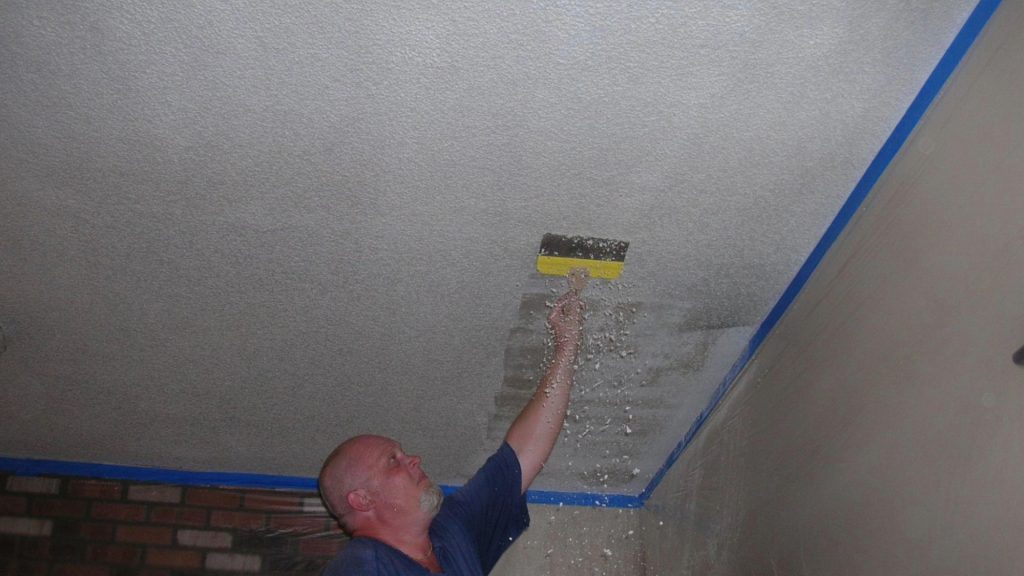
Source: Flickr/Brian Kirk
In today’s real estate market, prospective buyers frequently avoid homes featuring popcorn ceilings or any textured ceiling. Instead, they lean towards a sleek, smooth finish to achieve a more contemporary aesthetic.
Expensive Dilemma: The Expense of Removing Popcorn Ceilings
For some buyers, the existence of popcorn ceilings can become a deal-breaker when choosing a home, primarily because of the steep expense associated with their removal.
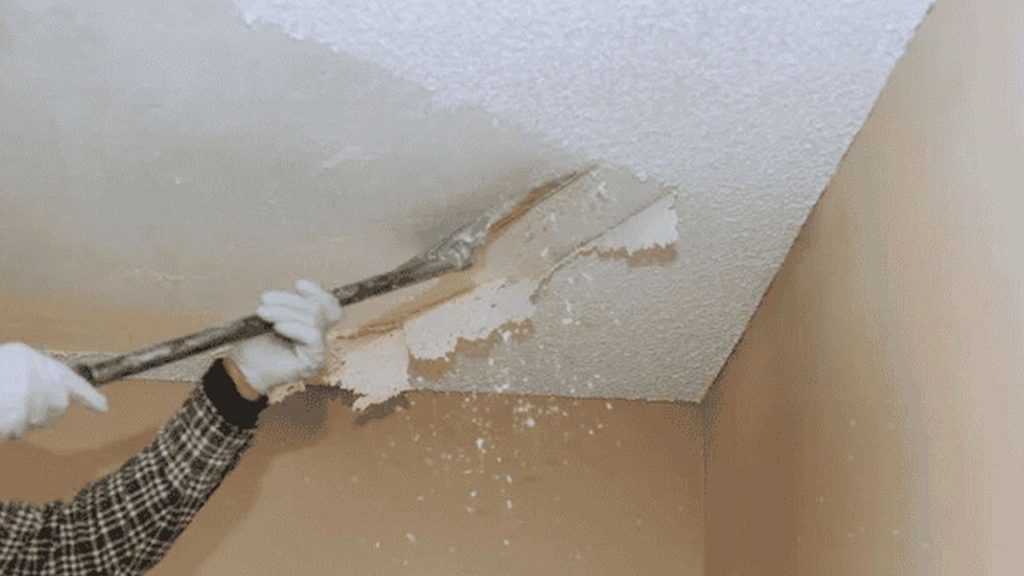
Source: X/MandRPainting_
Contractors usually bill between $1 to $2 per square foot for this undertaking, resulting in an average cost of around $1,700 for the entire project.
Eliminating Popcorn Ceilings Might Enhance Your Home’s Value
Eliminating any remaining popcorn ceiling residue from previous years could also enhance the overall value of your home.
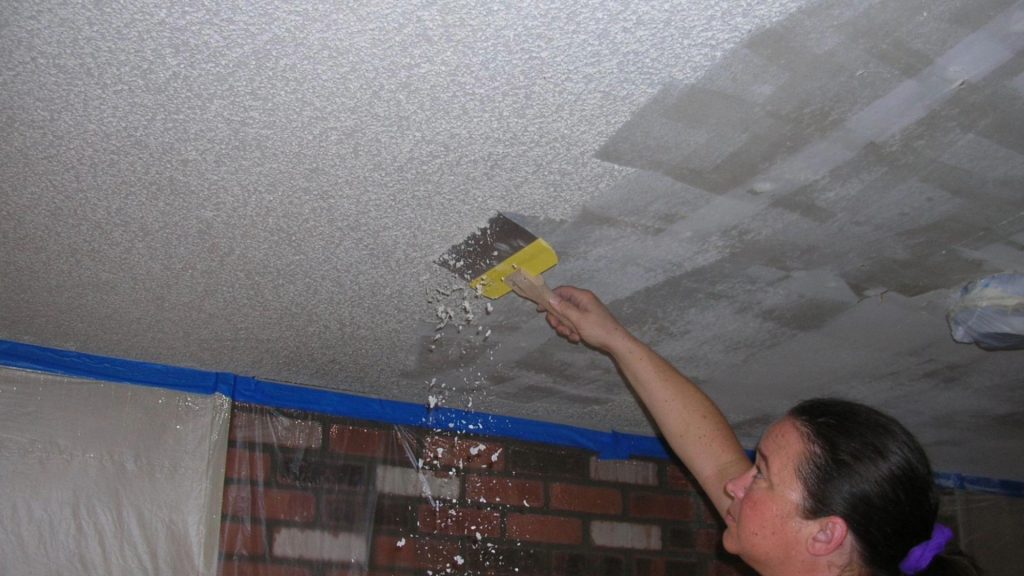
Source: Flickr/Brian Kirk
Prospective homebuyers might also be deterred by the potential health risks associated with popcorn ceilings. Some older variations of the textured finish contain asbestos, a substance known to cause cancer and other severe health issues when inhaled or ingested (according to Classic Remodeling).
Ceiling Safety Warning: The Concealed Hazards of Popcorn Ceilings
Newer homes often utilize popcorn ceilings crafted from styrofoam, presenting a notably safer option. However, if your home predates the 1980s, it’s crucial to assess for the presence of asbestos. Engaging a professional to inspect these ceilings is advisable.
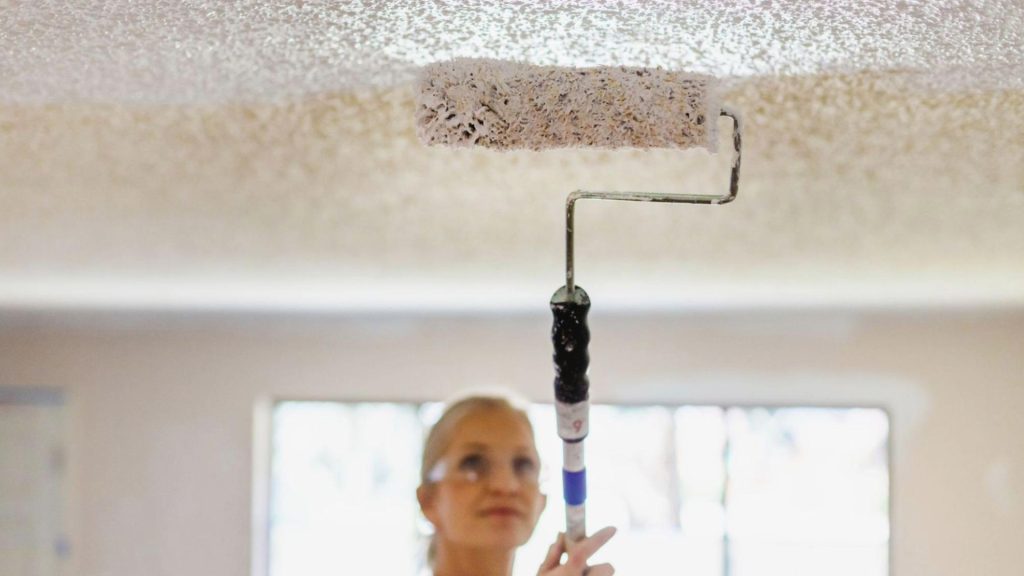
Source: X/BillericaRealt1
Popcorn ceilings tend to accumulate dirt, dust, and spiderwebs, necessitating more frequent cleaning to uphold their appearance.
Concealment Options: Effortlessly Transforming Popcorn Ceilings
Disguise strategies are simple to implement and offer an excellent solution for concealing popcorn ceilings. Most of these methods are straightforward and require only basic tools and materials. For instance, ceiling tiles can be conveniently affixed to the existing ceiling using adhesive or suspended using a grid system.
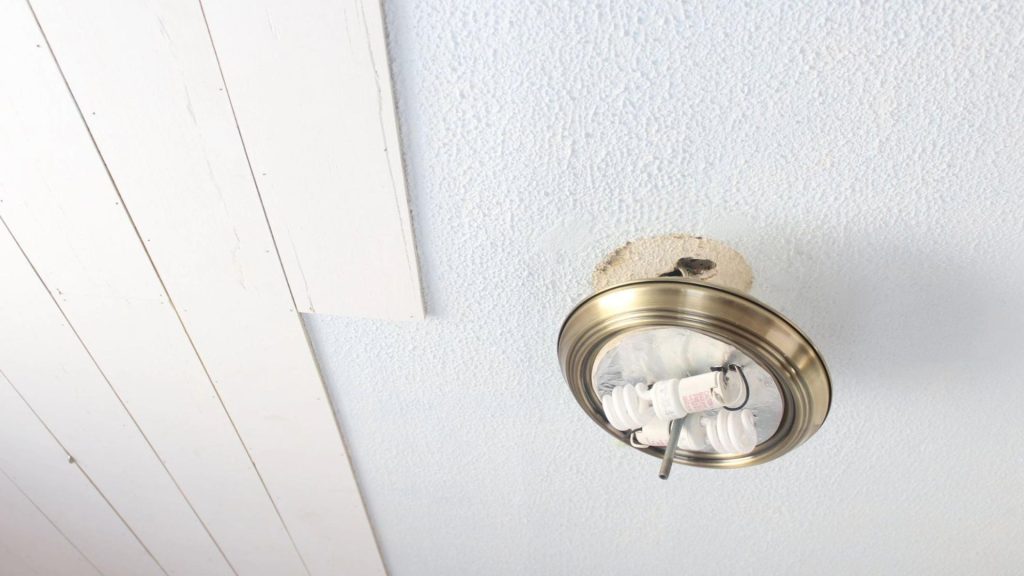
Source: X/MandEPainting
Wood paneling and drywall can also be directly installed over the popcorn texture using screws or nails.
Selecting the Ideal Cover-Up Solution for Your Popcorn Ceiling
The cost of cover-up solutions for popcorn ceilings is determined by two factors: the chosen material and the size of your ceiling. Opting for affordability, ceiling tiles emerge as the most economical choice, allowing you to save money.
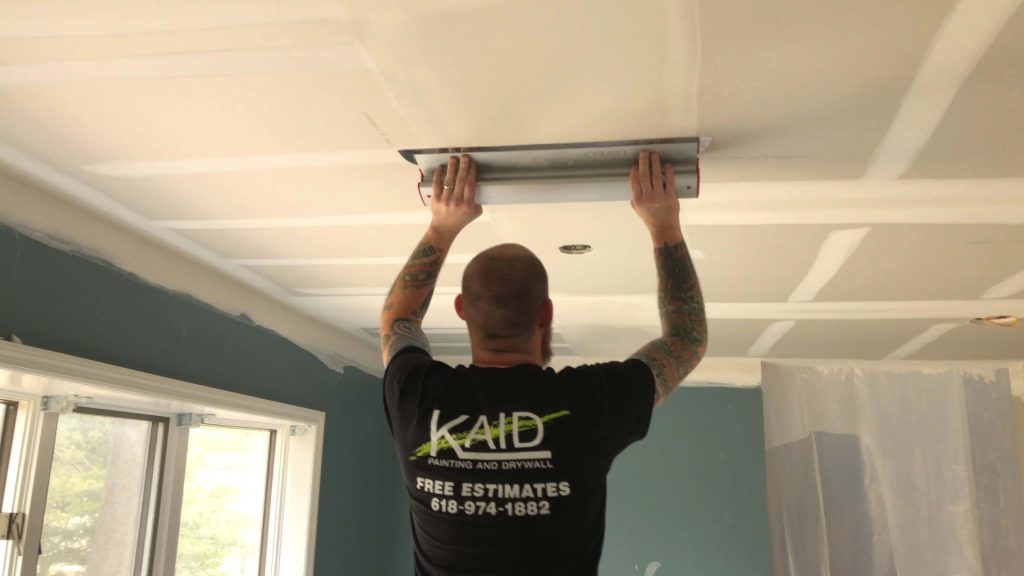
Source: Level5tools
Conversely, opting for wood paneling or drywall may entail a slightly higher cost due to the pricier materials and potentially more complex installation process. When deliberating on which cover-up solution to pursue, consider both your budget constraints and the desired aesthetic outcome for your ceiling.
Advantages and Disadvantages of Cover-Up Solutions
Revamping your popcorn ceilings is a breeze with cover-up solutions, simplifying the process and saving you significant time and effort. Moreover, you have a plethora of materials and designs at your disposal, enabling you to impart a personalized touch to your space and elevate its aesthetic with a modern flair.
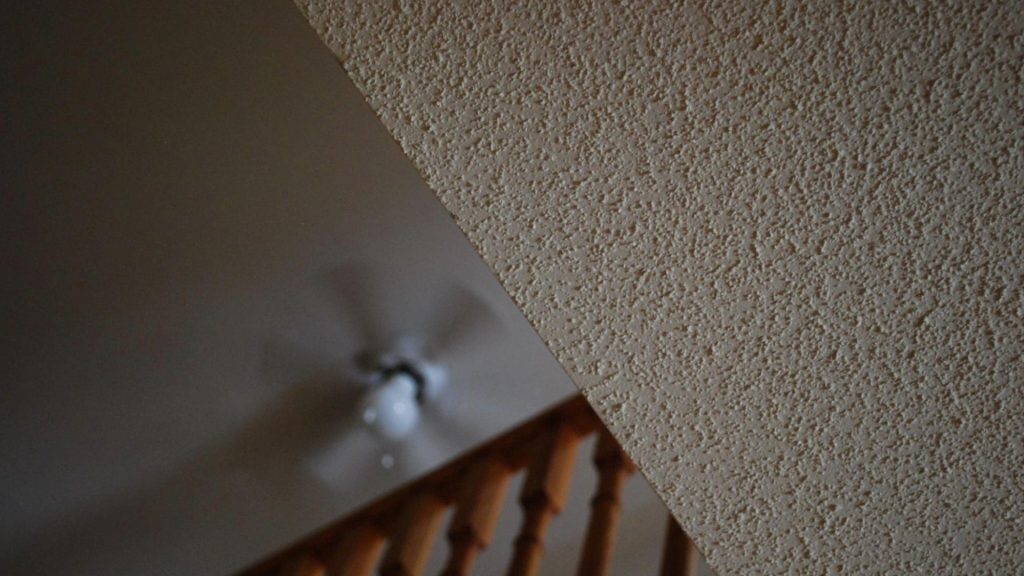
Source: Flickr/Enoch Leung
However, it’s important to be mindful of potential drawbacks, such as a reduction in ceiling height, which can be a significant concern for taller individuals. Additionally, improper installation poses the risk of damage to the cover-up solution and the underlying structure.

